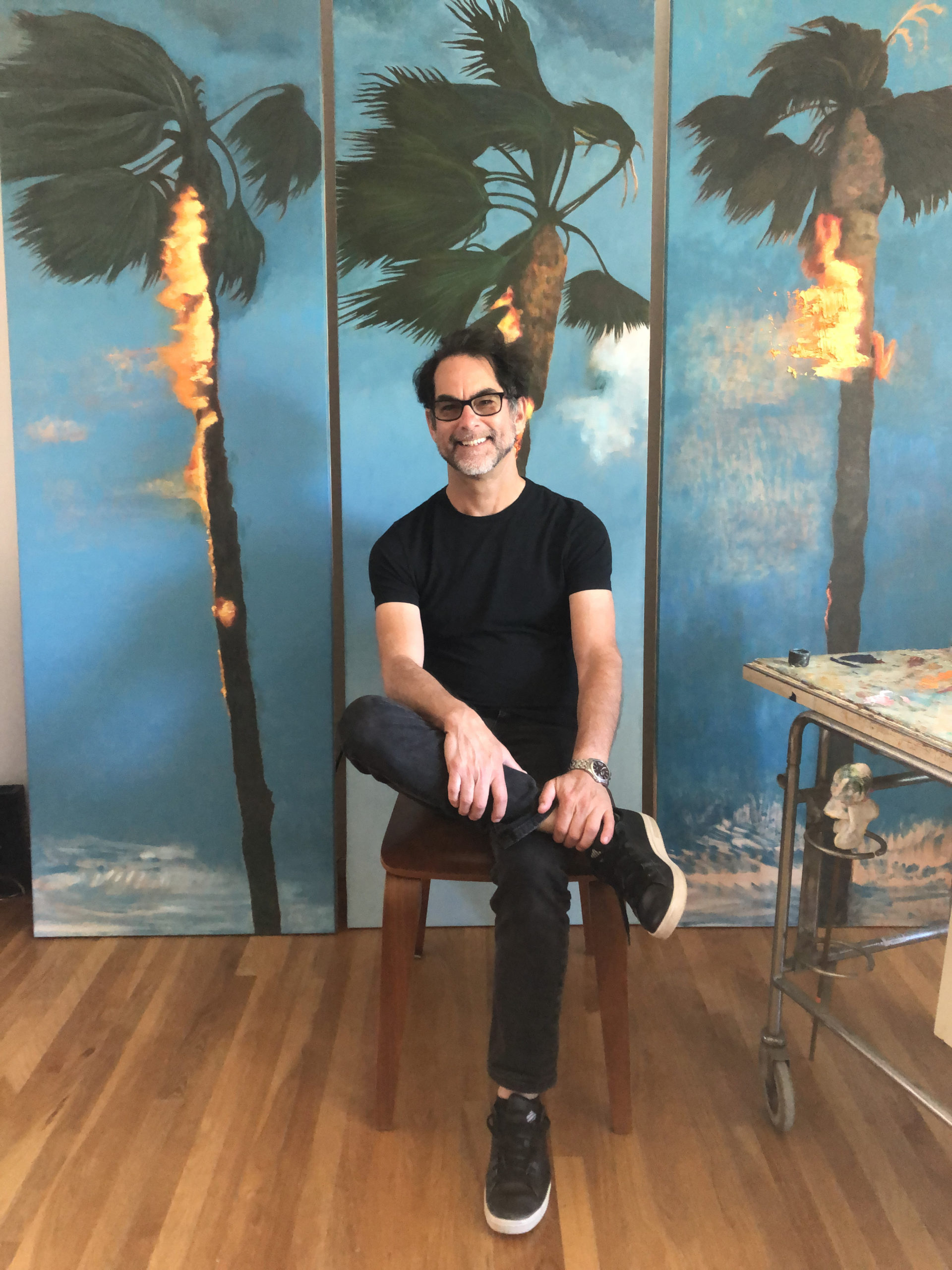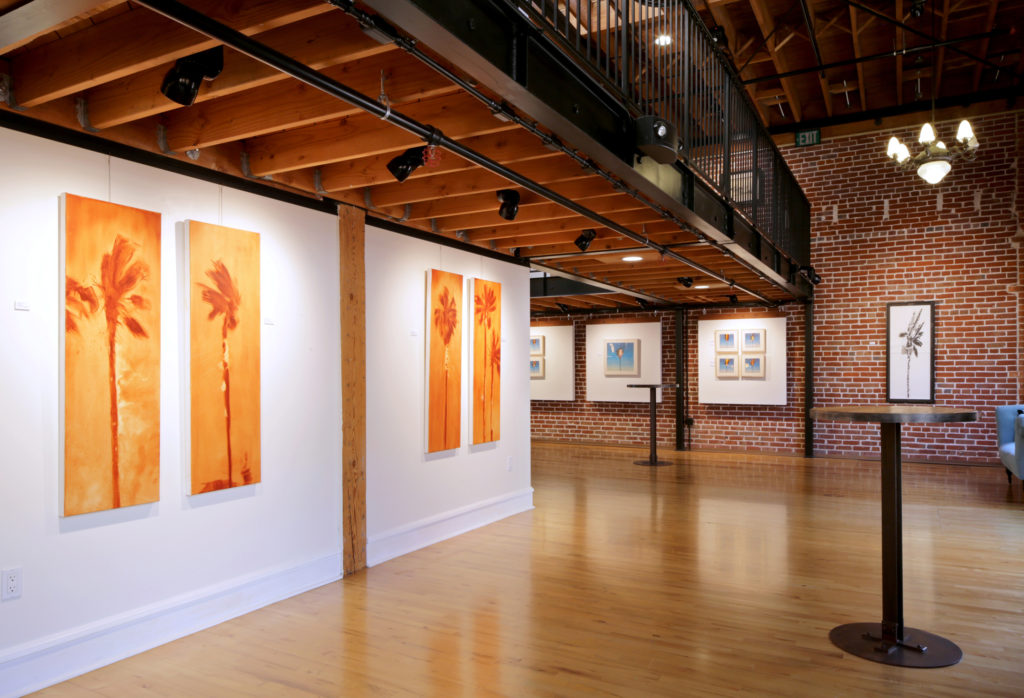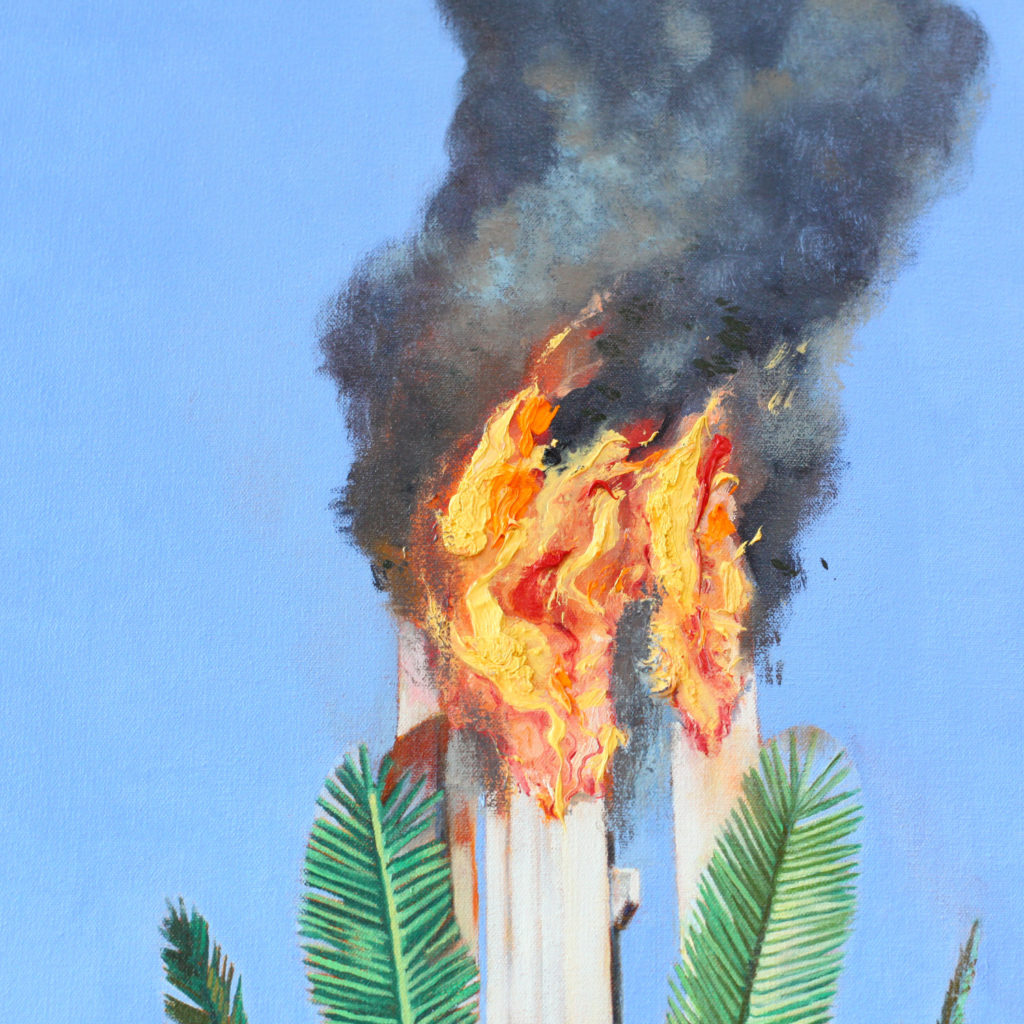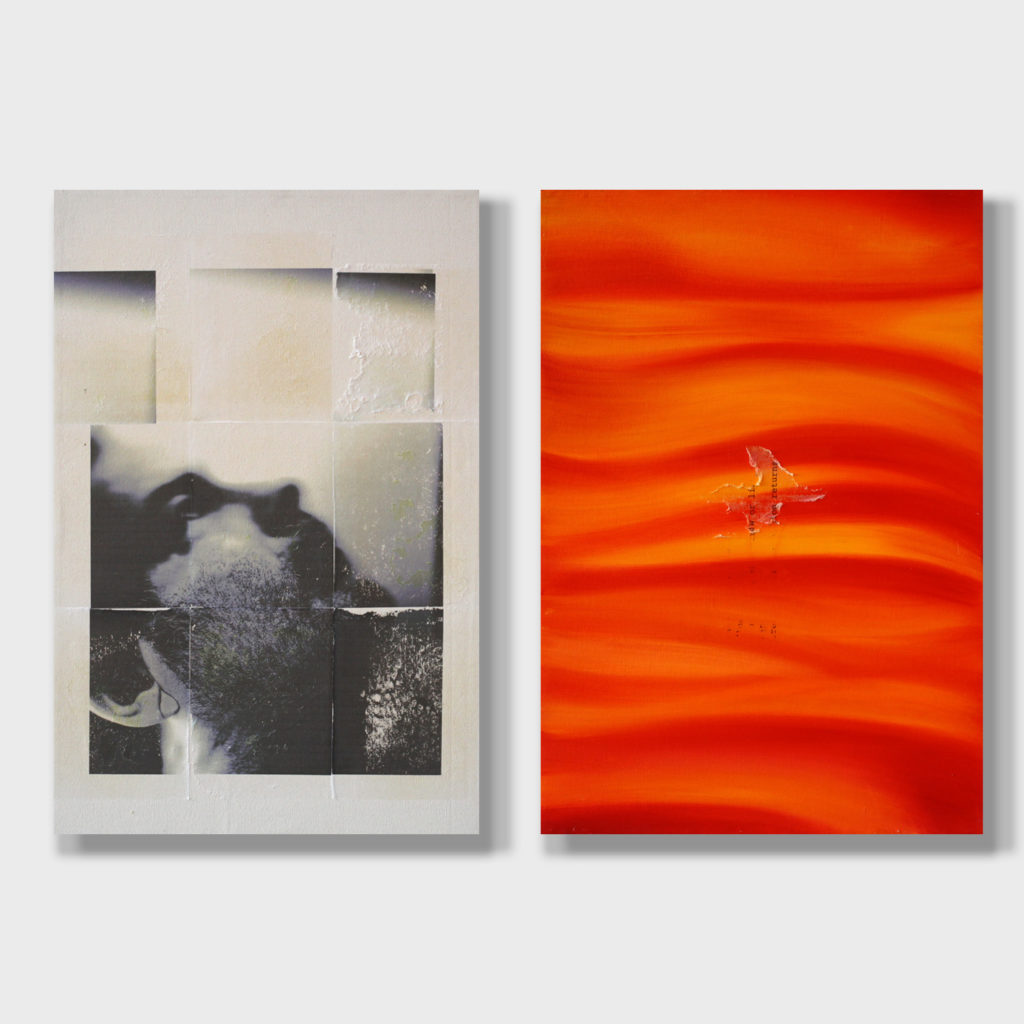Q&A With Perry Vasquez

San Diego interdisciplinary artist Perry Vásquez reflects on the California mythos with his series “Oasis”, a collection of artwork centered around a startling motif – palm trees on fire. We asked the artist a few questions to learn more about his inspiration, process, creative expression, and what he hopes for the future of his art.
Sparks: What inspires your work?
Vasquez: My work is inspired by my experiences, which come in two flavors. There are the experiences that I choose to have, like reading a book, having a conversation with a friend, walking on the beach, listening to a record, etc. And when I choose those experiences, I know what I’m looking for because I’m generating patterns that I’ve had in the past. Then there are the experiences that happen out of nowhere that I’m not expecting, and a lot of times those deliver gold as well. So, my work is inspired by the moments from all those experiences, and if I’m lucky I’m able to combine the insights from both of them into the creative process.

Sparks: Is there a message that you try to convey through your subject matter?
Vasquez: Individual artwork may have a specific message and even though I may consciously try to communicate that message, I feel that the viewer is always going to add elements of their own experience when they take something away from my paintings. So in terms of the palm tree paintings, one of the messages could be to question what our relationship is with nature at this time in the 21st century. In a larger sense, I am simply trying to create meaning out of the experiences that I have; that seems to be something that we all share as a species. We are constantly trying to make sense of the world around us and create meaning out of chaos and disorder. I think artists are, like everyone else, dealing with a chaotic world and then trying to distill out a message to play back to the world and they’re saying, “Here’s my message, do you get it? Does it align with your world? Does it make sense? Am I on the right track?”
Currently, I am using a nontraditional method, which is the use of heat transfer paper. It’s nontraditional in the art world in the sense that if you go down to an art supply store you may not be able to find that material. But it’s a common material that you can get in other places like office supply stores. I’m combining that with traditional oil painting techniques, referring to a process whereby my image goes through two stages: the first stage is to create an underpainting and the second stage is to create an overpainting. That is a very traditional way to create an oil painting.
Sparks: How do you see your artwork transitioning over time and down the line?
Vasquez: I see it expanding outwards because that sounds like growth. And occasionally I look back at where I’ve been and incorporate that into the present…I like the idea that through repetition, you retain a lot of things from one piece to the other. But when you sustain repetition, change does sneak in but very marginally, and gradually over time you see that change play out (but it may not be obvious at the moment). But I think this is a very organic way to develop change, and I would like to do that; whether or not I’m able to is another question though.
Sparks: What is the most important advice you want to share with young aspiring artists?
Vasquez: Okay, that’s a great question because I have students and I’m constantly telling them this. And the gist of my advice to them is that they should allow themselves to be bored. I think that’s a challenge for young artists nowadays because it’s so easy to “Zuckerberg” your world by turning on Facebook or checking Instagram the moment you feel bored. But there’s a Chinese proverb that says that boredom leads to fascination, so I think it’s very important to cultivate boredom, which sounds counterintuitive. But if you can, there’s always a moment where the world opens up to you and invites you in, like a small hole you can crawl into and explore.

Sparks: What music do you listen to when creating artwork?
Vasquez: Different kinds of music; if I were to look at my playlist right now, I would see the names William Brazinsky, Brian Eno, The Fall…I like baroque music, I like listening to baroque stations. Joanie Mitchell I’ve been listening to lately. I like all kinds of classical music and jazz. But the kind of music I like to have on in the studio is music that’s not too hectic. If a song is climaxing every 2 or 3 minutes it really throws me off. I like music to be ambient when I’m in the studio. I listen to my own music too because I’ve been recording music that is ambient, and I’m composing music to fit the mood that I’m wanting for the studio (so in a sense designing my own environment).
Sparks: What do you hope for the future of art?
Vasquez: I hope that painting remains relevant, because that’s what I like to do. I’ll tell a little story about that because when I was a graduate student, I had an advisor…he told me in our first meeting that he thought painting was dead and that paintings were just things that obstructed the wall. And so I thought, “Okay, thank you advisor, I’ll take that and think about it”. Even though I was perhaps offended at the time, he did me a good favor by forcing me to think about the relationship a painting has to a wall, because a lot of times we don’t think about that. We think about the canvas, the picture plane, and how people look at it, but you don’t think about it on the wall, so I thank him for that.
I have to think in a more local sense because it’s easier for me to think locally rather than globally and universally, because that’s so overwhelming. I think for our local San Diego art scene, I would hope that in the future, we can continue to create a “scenius” for our artists, venues, and art institutions. What I mean by that is a “scenius” is a specific version of genius. A genius is talent that appears in an individual person, but I think that for genius to arise, there has to be a community that feeds it. You can say that genius takes place in the context of the scenius, and a good example of a scenius is Paris in the 1920’s; there was a coincidence of events and persons that created a beautiful environment for art. So if San Diego can create a scenius, then I think the future of art here can continue to be strong.


